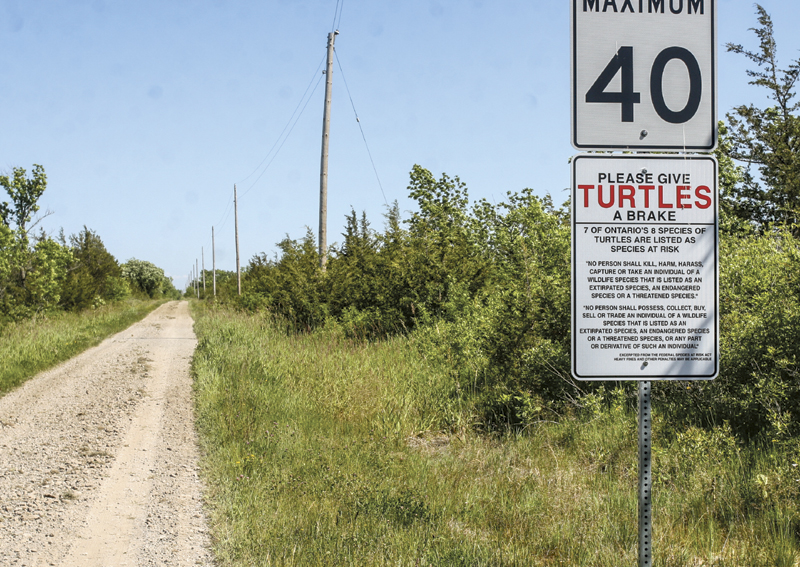Wind
Cancelled

Ostrander Point industrial wind project contract terminated
It’s over. Without fanfare or press statement, Ontario’s Independent Electricity System Operator (IESO) quietly terminated its power purchase agreement for the Ostrander Point wind energy project last week. This likely means the end of the project, the first instance in which public opposition has stopped an industrial wind project after it was granted a Renewable Energy Approval from the Ministry of the Environment and Climate Change.
It may not be the last.
The decision of the Ostrander Point Environmental Review Tribunal (ERT) to revoke the Ostrander Point developer’s permit establishes several important precedents that are likely to form the basis of future appeals.
The White Pines project—27 industrial wind turbines stretching from Milford to the edge of the Prince Edward Point National Wildlife Area— promoted by wpd Canada, surrounds the Ostrander Point project. It features much of the same alvar landscape and natural habitat. Another Tribunal has already concluded that the White Pines project will cause serious and irreversible harm to the Blanding’s turtle and little brown bat—both endangered species in Ontario.
Currently, the developer is preparing arguments to show that it can reduce the harm to these species. The appellant, the Alliance to Protect Prince Edward County (APPEC), along with counsel Eric Gillespie, is readying its arguments to persuade the Tribunal to take the next step—to revoke the developer’s permit.
They are expected to lean heavily on the Ostrander Point ERT ruling since it addresses several of the key issues, specifically the Blanding’s turtle and the natural habitat that extends across both projects. The Ostrander decision also guides the White Pines Tribunal to apply precaution for the plight of vulnerable species at stake.
In simple terms, the onus is on the developer to demonstrate that the measures it proposes to mitigate harm to the Blanding’s turtle and little brown bat will work. It is not good enough merely to have a plan to protect these species—it must prove that its plan will succeed.
The White Pines developer has a steeper hill to climb than did the Ostrander Point developer. In its case, the Tribunal found that the threat to the Blanding’s turtle extended beyond the project property to municipal roads intersecting the area. The White Pines developer will have to present mitigation plans that encompass a wide geography as well as roadways it doesn’t control.
Meanwhile, little brown bat populations are declining steeply due to the effects of a fungal disorder. The disease makes the bats highly vulnerable to fatal collisions with blades of industrial wind turbines—moving, at the tips, at about 80 feet per second.
On Amherst Island, residents await the decision of an ERT examining the appeal of a 26-turbine project on this 20-kilometre long sliver of an island. The Blanding’s turtle figured prominently in the arguments in this hearing. Residents and naturalists lined up to report 62 sightings of the turtle. In response, the developer sent a team of biologists fanning across the island, finding neither turtles or their nests.
Back in the County, there is joy arising from the Ostrander Point decision and its potential impact on future appeals. Yet the Save the South Shore fund remains well short of the fees and expenses incurred in the legal battle, despite its landmark success. Those interested in participating in this achievement are invited to make a contribution at savethesouthshore.org.

The Ostrander’s Point should have never been considered as a site for wind turbines in the first place. The way the government stripped away the powers of the municipalities to impose the development of these heavily subsidized companies is appalling and the tactics to put people against each other are disgusting. That was wrong in so may ways.